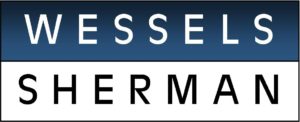Protecting Employers Since 1985
COVID-19 and Hazard Pay
As COVID-19 spreads throughout America, companies are deciding whether to give pay raises to employees, especially those clearly exposed to COVID-19 risks. This is a really hot topic, so much so that we decided to spend a bit of time looking at what is happening. Most of our information is a result of internet searches over the weekend.
Many people argue that workers who are incurring some amount of unavoidable risk from COVID-19 deserve additional pay (often termed “hazard pay”).
Many of the workers now being relied on for food, supplies and more (such as restaurant workers, delivery drivers, janitors, and others) amidst the backdrop of COVID-19 are traditionally low-wage jobs. At Kroger, for example, the country’s second-largest grocery chain with 453,000 workers, the average hourly wage of cashiers is $9.94 per hour according to recent online estimates.
These frontline workers endure great risk as they serve the public. Therefore, many commentators, journalists, and union representatives argue these workers should be granted hazard pay.
SOME FRONTLINE WORKERS ARE RECEIVING $2 PER HOUR PAY RAISES: Responding to pressure from the UFCW, two major grocery stores, Safeway and Shoppers, are now offering an additional $2 per hour of hazard pay. Other companies have recently announced pay bumps for its front line workers – including Amazon, Albertsons, Whole Foods, and Target which all announced $2 per hour pay raises for eligible employees.
Walmart announced on March 19, 2020 that it would provide a special cash bonus “for hourly associates for their hard work and dedication to serving customers in a time of an unprecedented national health crisis.” The bonus will be $300 for full-time hourly associates and $150 for part-time hourly associates and will add up to more than $365 million. Walmart further announced that in addition to that special hazard pay bonus for hourly associates, Walmart will accelerate the next scheduled quarterly bonus for eligible associates a month early.
GOOGLE SEARCHES FOR HAZARD PAY: According to “Google Data,” recent Google searches for “hazard pay” have skyrocketed! As the COVID-19 pandemic deepens across America, the concept of “hazard pay” is increasingly on the minds of frontline workers (and the unions who represent them).
If the reader Googles “hazard pay COVID-19,” it will become readily apparent that this issue has electrified that sector of the American workforce which doesn’t have the option of working safely and remotely, far away from the public. The frontline worker must deal with the serious risk of exposure to COVID-19.
DEFINITION: The USDOL addresses “hazard pay” on its website. It notes:
“Hazard pay means additional pay for performing hazardous duty or work involving physical hardship. Work duty that causes extreme physical discomfort and distress which is not adequately alleviated by protective devices is deemed to impose a physical hardship. The Fair Labor Standards Act (FLSA) does not address the subject of hazard pay, except to require that it be included as part of an employee’s regular rate of pay in computing the employee’s overtime pay.”
Almost anyone not working remotely in this COVID-19 era could make a cogent argument that they should be granted hazard pay under that definition.
SURVEYED EMPLOYERS: An online newspaper, Workspan Daily, published an online article: “How Organizations are Handling Rewards and Hazard Pay Decisions in a COVID-19 World,” (April 3, 2020). The article explored how companies are making compensation decisions involving COVID-19 pressures relating to hazard pay.
Workspan Daily conducted a poll of 267 organizations. The results of the poll showed that 65% of organizations polled did not offer hazard pay but instead offered perks such as meals and daycare options to frontline workers. 9% of the companies polled had no plans to offer hazard pay or perks to employees.
26% of surveyed employers said they are planning to provide hazard pay at some point. Of those, 9% will offer a cash incentive as hazard pay that is a flat dollar amount, 8% will give cash incentives as hazard pay tied to hours and shifts worked, and 9% will give cash incentives as hazard pay based on a different formula (such as a percentage of salary).
PRESSURE FROM UNIONS: Unions across America are pressuring select employers to provide hazard pay. APNews.com reported online that the Illinois Nurses Association achieved hazard pay for certain nurses at University of Illinois Hospital. On April 3, 2020, the agreement between the union and the hospital regarding hazard pay was announced:
“Depending on assignment, the extra pay ranges from $5 an hour to $15 an hour for registered nurses and from $3.50 an hour to $9 an hour for licensed practical nurses. Nurses on salary also get increases.
The agreement will remain in place until either the Illinois stay-at-home order is lifted or the hospital suspends its internal emergency operations.
Alice Johnson, INA executive director, said in a statement the agreement offers ‘an immediate way for our members to be compensated for the additional work, stress and risk that they are under.’” (emphasis added)
CENTRAL STATES JOINT BOARD:
Central States Joint Board is a Chicago area umbrella union for a number of small locals which represent employees primarily in small manufacturing companies. They use the names Novelty and Production Workers Union, Chemical and Production Workers Union (CPWU) and Plastics Workers Union. They have numerous local numbers which are Locals Nos. 8, 10, 12, 16, 18, 20, 24, 30 and 803.
They sent out an email last week asking for 15% hazardous duty pay. So far as we know, none of these manufacturing companies have granted it or given anything in the way of hazard duty pay.
TEAMSTERS LOCAL 743:
On Tuesday of last week, IBT Local 743 emailed companies where they have contracts asking for hazard pay or some other kind of compensation for members who are “putting themselves in harm’s way”. IBT 743 states that many of the facilities where they have contracts “have stepped up and given their employees hazard pay”. We do not know if this is true.
SCOTT NARUG’S RESEARCH:
Our good friend Scott Narug spent some time on the internet over the weekend and came up with the information below.
| Company Name | Industry Segment | Pay Increase |
| Altice | Broadband/IT | 20% |
| Acme | Grocery Store | $2.00/hour |
| Amazon | Warehouse | $2.00/hour |
| Campbell’s | Food Manufacturing | $2.00/hour |
| Cargill | Agriculture | $2.00/hour |
| Circle K | Convenience Store | $2.50/hour |
| Cub’s Foods | Grocery Store | $2.00/hour |
| Fred Meyer | Grocery Store | $2.00/hour |
| Kroger | Grocery Store | $2.00/hour |
| Meijer | Grocery Store | $2.00/hour |
| Modelez | Food Manufacturing | $2.00/hour |
| PCC | Grocery Store | $2.00/hour |
| Quick Trip | Grocery Store | $2.00/hour |
| RaceTrac | Convenience Store | $3.00/hour |
| SafeWay | Grocery Store | $2.00/hour |
| Sheetz | Convenience Store | $3.00/hour |
| Stater Bros | Grocery Store | $2.00/hour |
| Target | Retail | $2.00/hour |
| Tops | Grocery Store | $1.00/hour |
| Wegmans | Grocery Store | $2.00/hour |
Grocery workers, agricultural producers, truck drivers who keep the supply chains moving, cooks and delivery people, along with healthcare professionals, first responders, sanitation employees, and others whose labor is essential to a functioning society during this pandemic, now make a strong persuasive argument through online petitions, union representatives, and other means of negotiation that they should be awarded hazard pay.
Employers must now evaluate these pressures for hazard pay. Employers face the challenge of developing a strategy for business survival in this COVID-19 world. Our sense of the situation is that the public contact workers mentioned above are in most cases receiving hazard pay. That does not seem to be the case with manufacturers and small non-public contact companies.
UNION REQUESTS FOR HAZARD PAY BARGAINING:
What about union requests for bargaining on hazard duty pay? Usually this occurs where there is a labor contract in effect, not an ongoing bargaining context. The law is murky here and these situations are very fact sensitive. The labor contract could have a zipper clause which waives mid-contract bargaining. The NLRB caselaw almost always involves an issue of unilateral change. In fact, the NLRB just issued a memorandum analyzing unilateral change caselaw because of its importance during a national emergency. Of course, the hazard pay issue involves a different fact pattern. Here the union has requested bargaining over the issue. National emergencies give a union a compelling argument that there is an obligation to bargain over hazard pay. The reality is that an employer risks little because there is no obligation to agree, only to discuss. Most employers conclude that the best route to go is to talk with the union if they make a request for hazard pay. It doesn’t seem appropriate in a national emergency to respond that we have no obligation to bargain, we’re not going to talk with you about this.
For assistance with figuring out the best course of action for your company, contact Attorneys Richard Wessels or Nancy Joerg at Wessels Sherman’s St. Charles, Illinois office: 630-377-1554 or by email at riwessels@wesselssherman.com or najoerg@wesselssherman.com.
FINAL REQUEST:
And now a final request. We are planning on updating this hazard pay commentary with information on what our clients are doing. We will not divulge any company name, only a summary of what you are doing. Let us know. Thanks.
Popular Posts
Contact us at any of our four Midwest locations
Schedule your confidential consultation
Contact Wessels Sherman if you would like to speak with one of our experienced labor and workplace attorneys, contact any of our four office locations and schedule a consultation.




